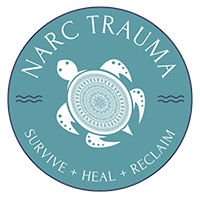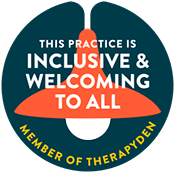How Can I Recognize Signs of Coercive Control?

By Brenda Stephens, Licensed Professional Clinical Counselor
Coercive control is a complex form of emotional abuse that can often be subtle and difficult to identify. Understanding the signs is essential for individuals who may be affected by it, whether personally or in supporting others. This guide will walk you through the key indicators to help you recognize coercive control.
Understanding Coercive Control
Coercive control refers to a pattern of behavior where one person exerts power over another, often in subtle, insidious ways. This control is established not through physical violence alone but by manipulating emotions and thoughts.
It’s important to distinguish coercive control from other forms of abuse. While physical abuse is visible and immediately recognizable, coercive control often unfolds behind closed doors, making it harder to detect.
Victims may feel trapped in a cycle of intimidation, guilt, and fear, leading them to question their reality. This psychological grip can make it challenging to seek help or even recognize that they are being controlled.
Getting a grasp on the definition of coercive control sets the stage for recognizing its signs. When awareness is raised, individuals can begin to understand how these behaviors manifest in their lives or the lives of others.
Recognizing Common Signs
Coercive control can be subtle yet pervasive; one of the most common signs is excessive monitoring. This may manifest as a partner wanting to know your whereabouts at all times or constantly checking your phone.
Another telltale sign is the isolation of the victim. An abuser may deliberately distance their partner from friends and family, making them more dependent on the abuser for emotional support.
Victims might also experience a gradual loss of their autonomy. Abusers often dictate different aspects of their partner’s life, such as what to wear, who to associate with, and even what to think.
Feeling a constant sense of anxiety around the partner is another crucial indicator. If someone finds themselves walking on eggshells to avoid conflict or disapproval, this might be a warning sign of coercive control at play.
Emotional Manipulation Tactics
Emotional manipulation is often the cornerstone of coercive control. Techniques can include gaslighting, where the abuser makes the victim doubt their own thoughts and feelings, creating a confusing reality.
Another tactic might be love-bombing, where an abuser excessively showers affection to establish a connection, and then withdraws it to instill insecurity. This cycle can confuse the victim and make them crave the initial affection.
Threats to harm oneself or others can also be used as a manipulation strategy. The abuser may suggest that they will hurt themselves if the victim leaves, instilling a deep sense of guilt in the victim.
Each of these emotional manipulation techniques serves to erode the victim’s self-esteem and reinforce the power dynamic in the relationship, making it crucial to recognize and address these behaviors.
Impact on Victims
The impact of coercive control on victims can be profound and long-lasting. Many victims experience anxiety and depression, stemming from the constant erosion of their self-worth and autonomy.
Victims may find themselves doubting their reality and feeling confused about their feelings. This emotional turmoil can hinder their ability to make even simple decisions and often leads to a sense of isolation.
Furthermore, the continuous stress from coercive control can result in various physical health issues, manifesting as chronic fatigue, headaches, and even gastrointestinal problems.
Recognizing these impacts not only sheds light on the gravity of coercive control but also emphasizes the urgent need for intervention and support systems for victims.
Getting Help and Support
If you suspect you or someone you know is experiencing coercive control, seeking help is a vital step. Hotlines and local support groups specialize in dealing with emotional abuse and can offer guidance tailored to specific situations.
It’s important to approach the situation delicately. Encourage open conversations, and let the victim know there is support available, whether through friends, family, or professional resources.
Educating oneself about coercive control can also empower victims. The more they understand the signs and tactics used, the more equipped they will be to reclaim their autonomy and well-being.
Support can also extend to therapy, where victims can explore their feelings in a safe environment and work towards rebuilding their self-esteem. Healing is a journey, and having a support system is essential.
Taking Action Against Coercive Control
Recognizing the signs of coercive control is a crucial step towards addressing and combating this form of abuse. By being aware of these signs, you can protect yourself and others from the damaging effects of such control.







